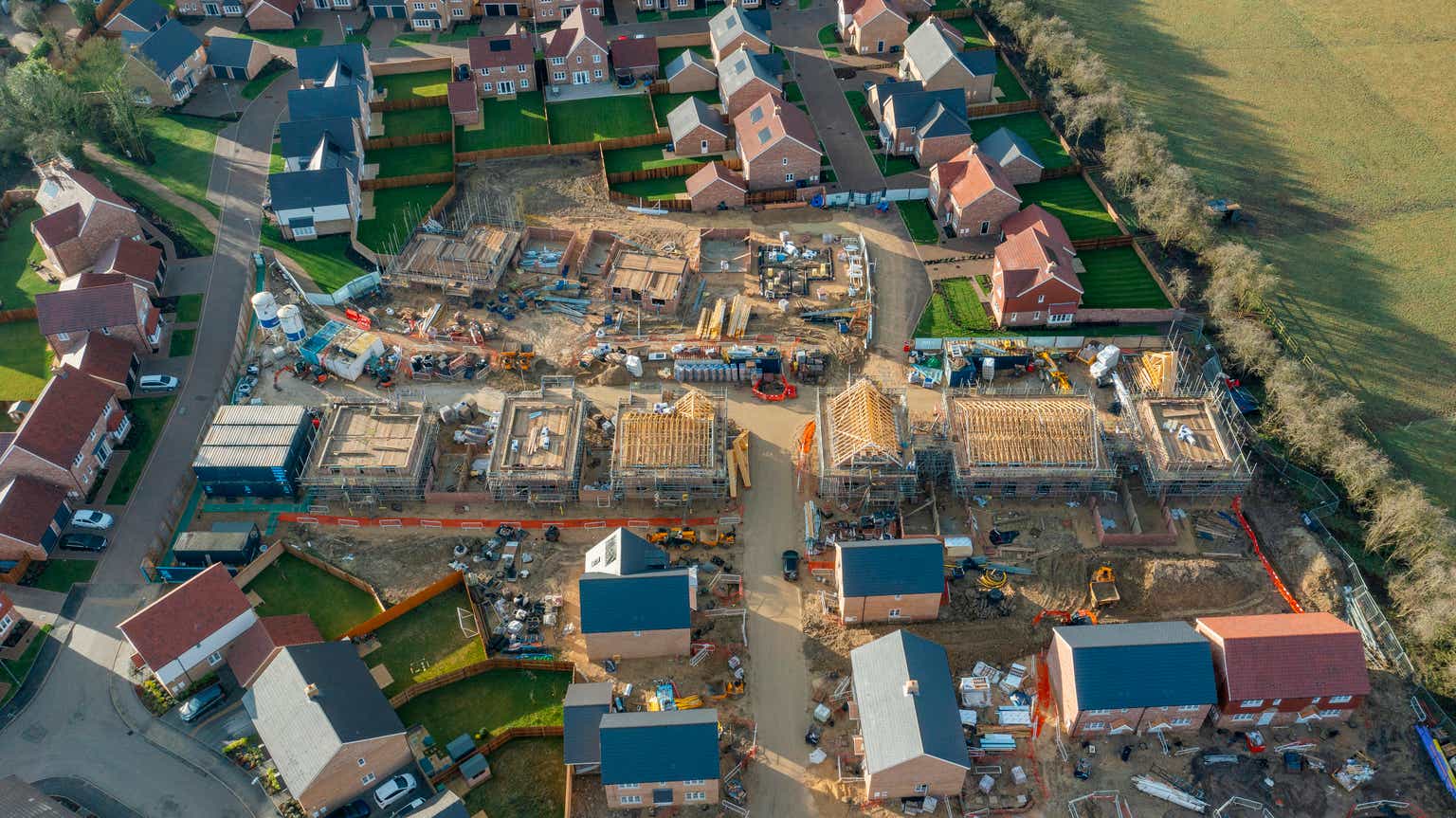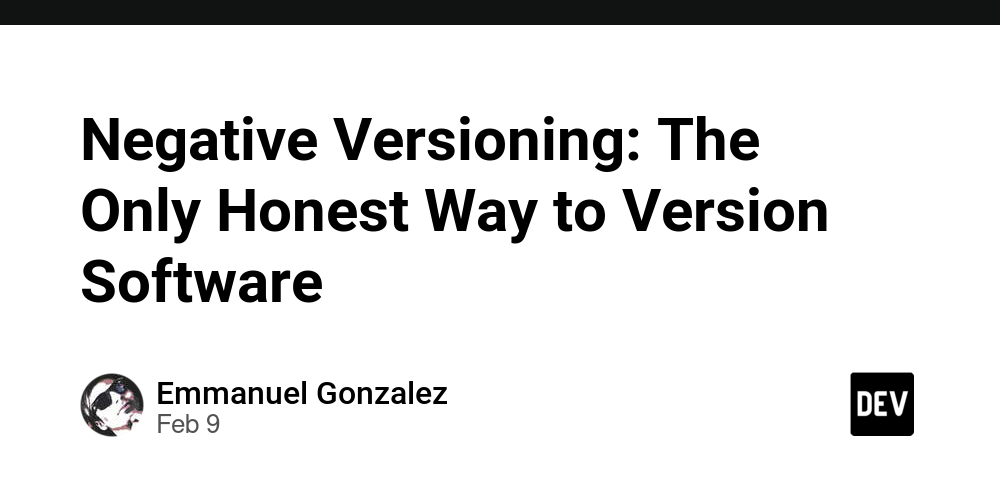They Flee Russia as Dissidents Seeking Asylum. The U.S. Locks Them Up.
Asylum-seekers are being detained because they come from Russia and Central Asia, immigrants and attorneys told The Intercept. The post They Flee Russia as Dissidents Seeking Asylum. The U.S. Locks Them Up. appeared first on The Intercept.

When Alexei arrived at the U.S.-Mexico border last June, he expected he’d have to wait a few weeks — maybe a month at most — while immigration officials determined whether he was eligible to enter the U.S.
Under the Refugee Act of 1980, people fleeing persecution on “account of race, religion, nationality, membership in a particular social group, or political opinion” can apply for asylum when they reach the U.S. This status grants them protection from deportation and an eventual pathway to citizenship.
As Alexei told an officer in an interview, he had good reason to flee his native Russia: The 27-year-old artist from Moscow had put out music with antiwar lyrics after Russia invaded Ukraine. He watched other musicians face threats of prison time and accusations of being “foreign agents” over their activism, and he began to fear for his life.
But after being told he passed that interview, and waiting three weeks in the Imperial Regional Detention Facility near the town of Calexico, California, Alexei was handed a piece of paper by a U.S. Immigration and Customs Enforcement officer stating that he would not be released. He would have to argue his case for asylum from detention, because he was considered a threat to national security.
In the last seven months of the Biden administration, immigration officials detained thousands of asylum-seekers like Alexei, who is using a pseudonym to protect his identity because he fears repercussions for his immigration status in the U.S. Many of these immigrants were detained because they came from countries that were once part of the Soviet Union, asylum-seekers and their attorneys told The Intercept. Attorneys representing immigrants from Russia, Uzbekistan, Kyrgyzstan, or several other countries in Central Asia that have significant numbers of Russian speakers have also told The Intercept that their clients have been forced to wait in detention centers until their asylum claims could be heard before a judge. Reporting from other outlets has unearthed memos that appear to back up this policy.
This is a departure from previous policy, when most asylum-seekers were granted parole, which releases them into the country to stay with family or friends until they can appear in court to argue their case for asylum. Detention has typically been reserved for people deemed to pose a threat to national security or a flight risk — labels now applied to the majority of Russians and other asylum-seekers from post-Soviet countries, The Intercept found.
It could be a preview of what’s to come under the new administration, when detention is likely to be applied much more broadly; one of President Donald Trump’s first executive orders this week directed immigration officials to grant parole only for “urgent humanitarian reasons or a significant public benefit” from the asylum-seeker being present in the U.S. Trump has also suspended new asylum applications until what he’s called an “invasion at the southern border has ceased,” although the cases of those who already managed to apply before he took office will still have to make their way through the courts.
Alexei ended up spending five months in detention, first in California — where he said about half of his center was of Russian-speaking origin — and then in Texas. His wife, who traveled with him, was held in a different detention center in California and then moved to Louisiana; they were only able to have three 10-minute phone calls during the entire time they were detained. And although both of them won their immigration cases and were able to enter the U.S. after being granted asylum, the psychological stress and uncertainty of their detention continues to weigh on Alexei.
“They did not explain the reason for [labeling] you a security threat, they simply [labeled] absolutely everyone,” Alexei said over the phone a few weeks after his release in mid-November, from a temporary home near Chicago where he’s staying with relatives. “Because of this, all of us Russians lived with the hope that if not today, then tomorrow, this ban would be lifted.”
Harsher treatment of asylum-seekers began in June of last year, asylum-seekers and attorneys told The Intercept. That’s around the same time that the Washington Examiner published a leaked memo, which instructed Border Patrol officers in the San Diego sector to automatically place citizens of six countries — Russia, Georgia, Moldova, Kyrgyzstan, Uzbekistan, and Tajikistan — into expedited removal proceedings. U.S. Customs and Border Protection did not respond to questions from The Intercept asking to confirm the authenticity of the memo.
Being placed in expedited removal allows people from these countries to be deported without an asylum hearing unless they claim that they fear returning to their home countries and pass a “credible fear interview.” Asylum-seekers who pass this interview are also more likely to be detained, as they are banned from posting bond, which would allow them to put up a sum of money as a guarantee that they would show up for their asylum hearings.
The Department of Homeland Security did not respond to a request for comment on the allegations that asylum-seekers from post-Soviet countries were being targeted for detention or expedited removal based on their national origin.
No publicly available data exists to show the rate at which different nationalities are detained after applying for asylum. But data provided by the Department of Homeland Security to comply with a congressional request show that last year, immigration officials denied parole requests for 18 percent of asylum-seekers from Uzbekistan who applied through CBP One, an app that immigrants were required to use to apply for asylum from May 2023 until the end of the Biden administration (Trump canceled the use of CBP One on his first day in office). This was the highest rate of any of the nationalities listed; the average denial rate for all nationalities was just over 4 percent. Russian, Afghan, Chinese, and Iranian nationals also had higher-than-average detention rates.
This new detention regime comes as migration from Russia, Central Asia, and the Caucasus reaches an all-time high. Russia’s invasion of Ukraine and subsequent military mobilization sent young men fleeing and left fewer options for Central Asians, who frequently migrated to Russia to find employment. Ethnic minorities, including Central Asians with Russian passports, are also disproportionately being sent by Russia to the front lines of war. With legal options such as the green card lottery limited, more people have decided to try and reach U.S. soil to apply for asylum through the border with Mexico. Border Patrol agents recorded 3,200 encounters with Uzbeks at the southern border in 2022, up from less than 700 in 2021; more than 23,000 Russian nationals were apprehended that same year.
The rise in migration from these countries coincided with an increase in immigration attempts overall, as CBP encounters with migrants at the Mexican border peaked in December 2023. Though they have since fallen drastically, border security became a flashpoint in the presidential election. Claims that these immigrants would take jobs and commit crimes have gone hand in hand with long-standing fears of terrorists infiltrating the southern border. This came to a head last fall, when the White House announced that the FBI was working to track down more than a dozen Uzbek immigrants who entered with the help of a smuggler believed to have “ties to ISIS.”
Though none of them were accused of having any affiliations with extremist groups themselves, NBC News reported in June that DHS had arrested over 150 immigrants “from Central Asia and elsewhere” who crossed into the U.S. in the past three years through an “ISIS-affiliated human smuggling network.” These reports were seized on by conservative members of Congress and right-wing organizations like the Federation for American Immigration Reform to urge the government to crack down on Central Asian immigrants in the U.S. by raising fears that they could be terrorists. CBP officials began detaining asylum-seekers who “fit the profile associated with individuals who were facilitated by this network,” a national security spokesperson told CNN.
“There [was] political pressure on the Biden administration to tighten up immigration enforcement for specific regions — to demonstrate that they’re taking threats [to national security] seriously,” said Maksim Fuchs, an attorney based in New York who works with Russian and Central Asian clients.
Abadir Barre, an immigration lawyer based in New York, said DHS left notes on his detained Central Asian clients’ cases saying that they were a national security risk “by virtue of their travel to the United States via a migration pathway that has connections to individuals with a nexus to foreign terrorist organizations.” Barre says this likely meant the Uzbek smuggler that was accused of having ties to ISIS.
For immigrants from Uzbekistan and other Central Asian countries, though, paying smugglers to get them to the U.S. was often the only way to claim asylum; getting an appointment through the CBP One app meant waiting in Mexico for months, and language barriers made it difficult to use. People “are not even aware of these smugglers’ connections,” Fuchs said, and many of them are scammed or otherwise taken advantage of in the process.
“None of them were proven to be a national security risk. It’s a big bogeyman.”
But arriving with the help of this smuggler still gave immigration officials an excuse to detain people, Barre said. He started visiting his clients in detention centers like the Winn Correctional Center in Louisiana and noticed that up to a third of the people detained there were Uzbek. That’s when he began to believe asylum-seekers from this region were being targeted for detention.
“None of them were proven to be a national security risk,” Barre said. “It’s a big bogeyman. They’re misusing national security, but it’s really Muslims and Uzbeks.”

Scrutiny of Central Asians by the media and law enforcement has mounted in the U.S. in recent years since the 2015 arrest of three Uzbeks living in Brooklyn for allegedly attempting to join ISIS, and the 2017 killing of eight people on a Manhattan bike path by an Uzbekistan citizen who professed allegiance to the Islamic State group. These cases sparked a media firestorm, and Uzbeks living in New York were subjected to surveillance by local police and federal officials, reminiscent of the widely documented system of New York City Police Department spying on Muslim communities that took off in the wake of 9/11. Fear of Central Asian extremists has been exacerbated by reports that in June, ICE agents arrested eight citizens of Tajikistan for “suspected ties to the Islamic State,” according to The Associated Press.
These reports have created “overblown fears of terrorism when it comes to ISIS,” said Steve Swerdlow, a human rights lawyer who specializes in Central Asia. Though not all asylum claims are legitimate and scrutiny is warranted, he cautioned that painting asylum-seekers from certain countries with a “broad brush” puts those who legitimately fear returning back to their home countries at significant risk.
Many asylum-seekers from Uzbekistan are in fact fleeing religious persecution from a repressive government that fears extremism just as much, if not more, as the U.S., and could be jailed or tortured if they are deported, especially once tarred with American officials’ suspicions that they could have links to terrorism. “When I see planeloads of people being sent to Uzbekistan, I have to ask, have U.S. officials really examined the risk?” Swerdlow said.
The detention of Russians is more puzzling and also more recent. Some attorneys believe it could be a response to Russia’s full-scale invasion of Ukraine, which began in February 2022. Russian asylum-seekers have only reported receiving parole denials en masse in the last seven months, according to Julia Nikolaev, an immigration attorney based in San Francisco who works mainly with Russian-speaking clients. In May, she started noticing that those who secured an appointment through CBP One and presented themselves in front of an immigration officer were ending up in detention, where previously they would have been released.
“Their parole requests were being denied for no specific reason,” Nikolaev said. “100 percent of people with Russian passports were ending up in detention — including women, which never happened before.”
She has now worked with about 35 clients, including Alexei, who have been detained, and had to turn down requests from dozens more. Even if they win their asylum cases from detention, government attorneys can immediately appeal, allowing them to continue detaining applicants for another 30 days at minimum. In informal conversations, those attorneys told her that “there is some internal directive that bans the release of Russians and a few other post-Soviet Union countries,” Nikolaev said.
In interviews with The Intercept, multiple Russian asylum-seekers who were detained starting in May 2024 said that ICE officers received word on June 14 that detainees with passports from Russia and several Central Asian countries would not be released on parole. One man, who is still in detention in Washington, said officials told him at the time it was “an email of some kind” that changed the policy.
Although The Intercept was not able to confirm the existence of this email, DHS had previously indicated its shift in policy. In November 2023, a month after the first reports of an ISIS-affiliated smuggler bringing Uzbeks into the U.S. were made public, DHS announced that Uzbek nationals caught trying to enter the United States via Mexico illegally would be detained rather than released on parole, Uzbek media reported.
The detentions have led asylum-seekers to increasingly speak out against their confinement. In December, Albert Khamitov, who fled Russia due to his opposition to President Vladimir Putin and status as a member of the LGBTQ+ community, began a second hunger strike after spending seven months in detention, during which he won his asylum case but continued to be detained after an appeal from the government. In a video recording that spread through Russian-language social media channels such as Telegram, Khamitov alleged that detention officers called him and other Russians “terrorists” and appealed to Yulia Navalnaya, the wife of the late opposition leader Alexei Navalny, to intervene.
It’s not clear whether it’s legal to apply a blanket detention policy to people from a certain nationality, or to target them for expedited removal. “A lot of deference is usually given by courts to detention decisions,” said Jon Bauer, a professor at the University of Connecticut School of Law who directs the school’s Asylum and Human Rights Clinic. He pointed out that a 2009 ICE directive instructs officers to strongly consider releasing asylum-seekers who pass a credible fear interview, but that this directive has been violated in the past.
Discrimination in the asylum process is also not without precedent. In 1990, the federal government agreed to settle a lawsuit filed by a coalition of religious, legal assistance, and human rights organizations, who claimed that immigration officials were systematically discriminating against asylum-seekers from Guatemala and El Salvador. And in 2003, the attorney general directed judges to uphold the detention of Haitian asylum-seekers who arrived in the U.S. by boat, claiming that releasing them would pose a national security risk.
Keeping people in detention while they await their hearings negatively impacts their chances of receiving asylum, said Ingrid Eagly, a law professor at the University of California, Los Angeles who published a paper analyzing data on asylum decisions earlier this year. It can be more difficult to access legal counsel, especially if detainees are moved to faraway centers in states like Louisiana, as well as to gather evidence to present in their defense.
Immigration officials are sometimes forced to make decisions based on how much capacity they have to detain people, said Jennifer Ibañez Whitlock, an attorney and member of the American Immigration Lawyers Association. A pandemic-era rule allowing CBP to immediately deport people who crossed illegally without processing their asylum claims expired in May 2023, leading to an influx of migrants at the southern border. “CBP has to triage,” Ibañez Whitlock said, which can mean prioritizing the detention of certain nationalities. Asylum-seekers from “hard to remove countries” that don’t often accept deportation flights from the U.S., which included the six countries listed in the leaked CBP memo from June, might end up in detention over others that can be easily removed.
Barre, though, believes DHS’s actions are against the law. In March, he filed a class-action lawsuit representing 35 asylum-seekers from Uzbekistan who were held in detention while they waited for their asylum cases to be decided — including several who were arrested by ICE after already being released on parole to await their hearings. In it, he alleged that the government was violating his clients’ right to due process purely based on their nationality and religion; shortly after he filed the suit, ICE started releasing his clients from detention, and the case was dismissed in August. Barre then filed two other lawsuits on behalf of Russian asylum-seekers, one of which is still moving forward with 276 plaintiffs. He hopes that aside from securing the release of his clients, he can gain more information on the specifics of DHS’s decision to target certain nationalities through the legal discovery process.
The Trump administration is now planning to detain immigrants who are awaiting decisions in their immigration cases rather than releasing them to live with sponsors, a move that could overwhelm detention centers and prisons; ICE is planning to more than double its detention capacity in preparation, the Washington Post reported. It’s unclear what this means for asylum-seekers from Russia and Central Asia who have already been pushing to be released from detention for months. But even if they win their cases and are granted asylum, one of the goals of the detention system is to deter others from coming to the U.S. in the first place, Bauer said. And in that, immigration officials may be succeeding.
“People who went through persecution in their own country, they believe that the U.S. is a country that upholds the law and protects human rights,” Nikolaev said. “They flee here believing in the U.S. But I had many clients who are sitting in detention tell me, ‘Why did I come here? What I ran from, I see it here.’”
The post They Flee Russia as Dissidents Seeking Asylum. The U.S. Locks Them Up. appeared first on The Intercept.

































![[UPDATE] PlayStation Network is back and running](https://helios-i.mashable.com/imagery/articles/02ToD4H7iBKJXGD8xpj3dxR/hero-image.fill.size_1200x675.v1739025331.jpg)
















































